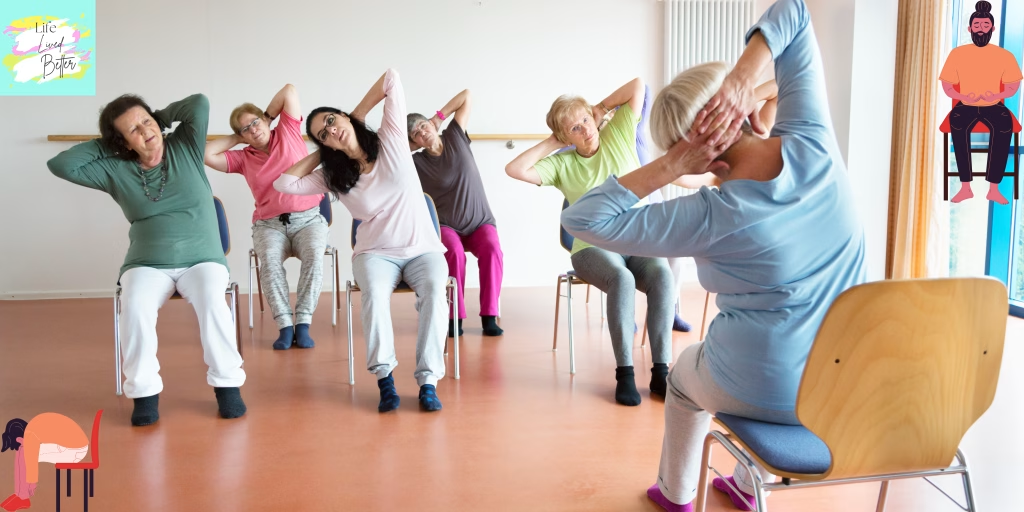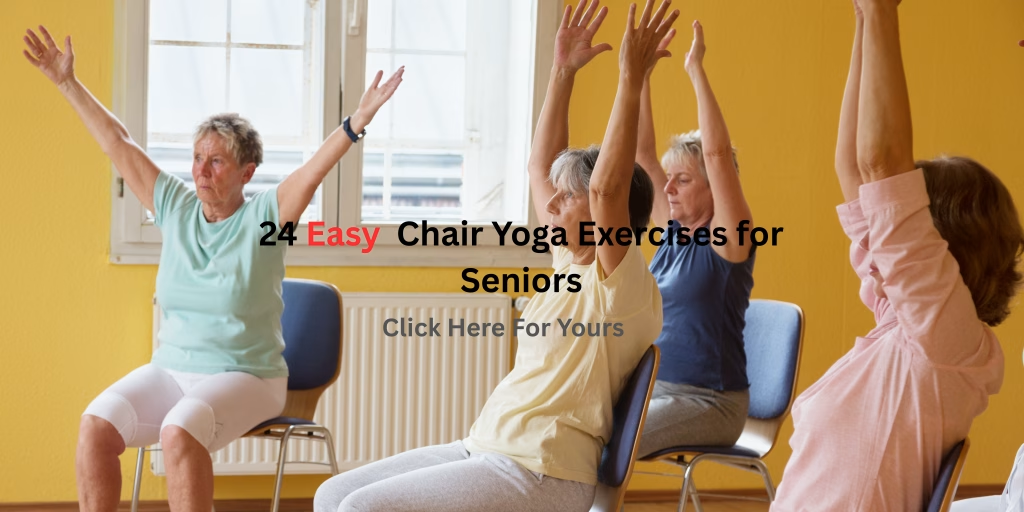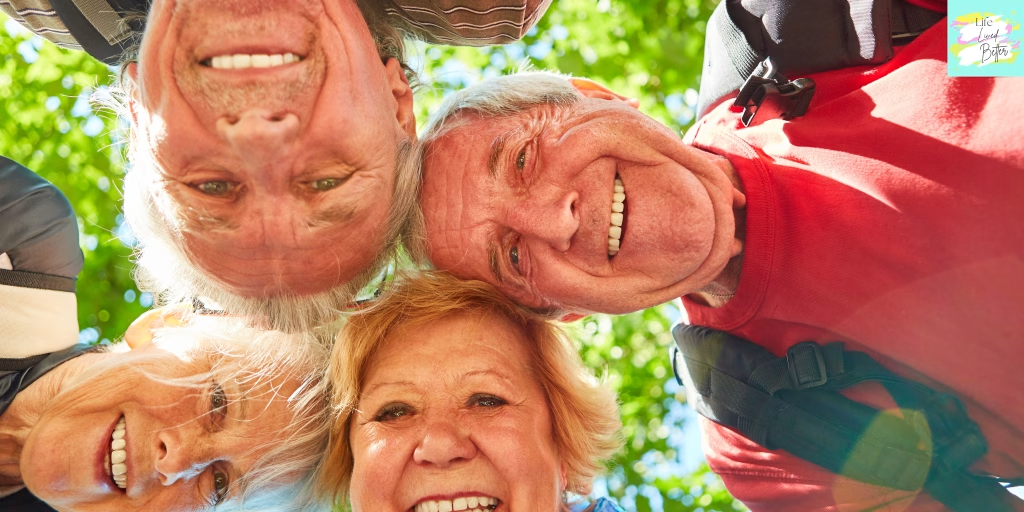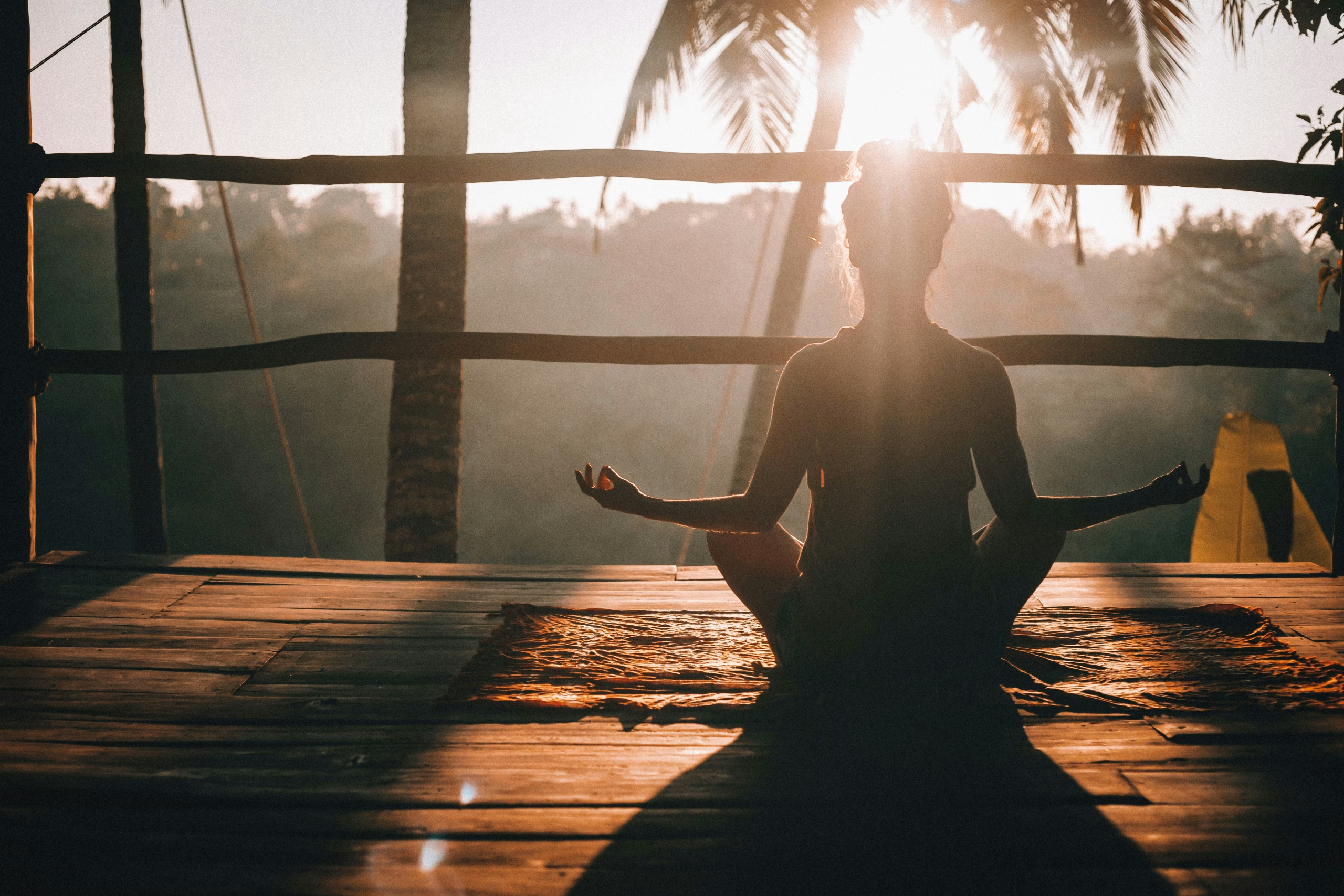SENIORS Get Flexible with Easy Chair Yoga!

1. Introduction: Your Path to Renewed Mobility and Vitality
As we reach our forties and beyond,maintaining an active lifestyle becomes increasingly important. Many people notice natural changes such as increased stiffness in joints. Gradual reduction in mobility, and concern about balance or the risk of falls. These are not insurmountable limitations but rather challenges that can be proactively and gently managed.
Chair yoga emerges as a highly effective and accessible solution for navigating these changes. It offers a gentle yet powerful way to maintain and significantly improve physical fitness, mobility, and overall well-being, irrespective of one’s current fitness level or any existing physical limitations. This practice is recognized as a holistic approach to wellness, providing a comprehensive pathway to enhanced vitality.
While the term “seniors” is often used in discussions about chair yoga, particularly for its strong presence in search queries (for example, “chair yoga for seniors” garners approximately 34,000 monthly searches ), it is crucial to recognize that the benefits extend broadly to anyone aged 40 and upward. Individuals in their 40s and 50s, for instance, are frequently seeking ways to proactively preserve their physical capabilities and prevent age-related decline, rather than solely addressing existing issues.4 Chair yoga perfectly aligns with this objective, serving as a valuable tool for anyone committed to maintaining mobility, flexibility, and overall fitness as they age. This approach helps make daily activities easier and contributes to a more vibrant and fulfilling life, broadening the appeal beyond a narrow demographic definition.
Through this guide, readers will discover practical steps, actionable advice, and a pathway to a renewed sense of confidence and independence, enriching their daily lives.

2. Why Chair Yoga? Unlocking a World of Benefits
Chair yoga offers a wide array of advantages, making it an exceptional choice for individuals seeking to enhance their physical and mental well-being. Its gentle nature belies its profound impact on the body and mind.
Comprehensive Physical Benefits
- Increased Flexibility and Range of Motion: Chair yoga poses gently stretch and lengthen muscles, which can significantly improve flexibility and range of motion. This makes everyday activities, such as reaching for items or bending down, considerably easier. It demonstrates that flexibility is not an inevitable loss with age but can be actively improved through consistent practice.
- Improved Balance and Stability: Many chair yoga poses challenge balance, strengthening core and leg muscles. This enhanced stability is crucial for preventing falls, a common concern as individuals age and can significantly boost confidence in movement.
- Enhanced Strength and Endurance: Engaging various muscle groups, chair yoga builds strength and improves endurance for daily activities, making tasks like carrying groceries or climbing stairs feel less taxing.
- Reduced Pain and Stiffness: The gentle movements of chair yoga can effectively loosen tight muscles and joints, providing relief from chronic pain and stiffness, including discomfort associated with conditions like arthritis.
- Improved Posture: By strengthening the muscles that support the back and neck, chair yoga encourages proper alignment and posture, counteracting the effects of prolonged sitting and promoting a more upright stance.
- Gentle on the Body: Chair yoga poses are inherently low-impact and easy on the joints, making them an ideal exercise for individuals with arthritis or other conditions that might make traditional yoga or high-impact exercises challenging.
Key Mental and Emotional Benefits
- Improved Mood and Reduced Stress: The gentle movements and focused breathing inherent in chair yoga stimulate the release of endorphins, the body’s natural mood boosters. This can help combat feelings of depression, loneliness, and isolation, fostering a more positive outlook and sense of well-being.
- Enhanced Sleep Quality: The relaxation techniques and stress reduction benefits derived from regular chair yoga practice often translate into reduced nighttime restlessness and promote deeper, more restful sleep.
- Improved Cognitive Function: Studies suggest that yoga, including chair yoga, can positively affect cognitive function and memory in older adults. The focused movements and mindful breathing may help stimulate brain plasticity and improve cognitive performance.
- Increased Self-Confidence and Body Awareness: As individuals gain strength and flexibility through chair yoga, they often experience a renewed sense of control over their bodies, which significantly boosts self-confidence and self-esteem. This also contributes to a decreased fear of falls, as improved balance, and awareness lead to greater security in movement.

The advantages of chair yoga extend beyond physical improvements to encompass significant mental and emotional well-being. For example, the enhancement of balance not only helps prevent falls but also directly alleviates the fear of falling, which in turn boosts confidence and overall life satisfaction. This creates a positive feedback loop where physical gains lead to psychological benefits, enriching one’s overall quality of life.
Highlighting Accessibility
Chair yoga stands out for its remarkable accessibility. It requires minimal equipment, often just a sturdy chair with a back, eliminating the need for expensive gym memberships or specialized gear. This makes it a budget-friendly and convenient exercise option. Furthermore, it is adaptable for all experience levels, making it suitable for beginners and experienced practitioners alike.
Chair yoga can be considered a foundational exercise, rather than a lesser form of physical activity. Its low-impact nature and adaptability make it an excellent starting point for individuals aged 40 and above who may be new to exercise, returning after a period of inactivity, or managing physical limitations. This practice builds essential strength, flexibility, and confidence, serving as a stepping stone that can empower individuals to explore other physical activities or even more advanced yoga forms without intimidation or a high risk of injury.
Chair Yoga Benefits at a Glance
| Category | Specific Benefits |
| Physical | Increased Flexibility, Improved Balance, Enhanced Strength, Reduced Pain & Stiffness, Better Posture, Gentle on Joints |
| Mental/Emotional | Reduced Stress, Improved Mood, Better Sleep, Enhanced Cognitive Function, Increased Confidence, Decreased Fear of Falls |
| Accessibility | Low-Impact, Minimal Equipment, Adaptable for All Levels |

3. Getting Started: Your Chair Yoga Essentials for a Safe Practice
Embarking on a chair yoga journey requires minimal preparation but careful attention to safety. For the target demographic, safety is paramount, and ensuring a secure environment and proper technique is crucial for building trust and encouraging consistent practice.
Choosing the Right Chair and Setting Up Your Space
Selecting the right chair and setting up your practice area are fundamental steps for a safe and effective session.
- Chair Selection: It is essential to use a sturdy, stable chair that does not have wheels. The chair should have a firm, flat seat, and a backrest. Ideally, choose a chair without wide armrests, as these can obstruct movement during poses.Common household chairs like a dining chair, office chair, or even a folding chair can be suitable.
- Proper Height: When seated, your knees should form a 90-degree angle with your feet flat on the floor. If your chair is too low, placing a folded towel or firm cushion on the seat can help achieve the correct height.
- Environment: Position your chair on a flat, level, and non-slip surface. Placing a yoga mat underneath the chair can further prevent slipping. Ensure you are in a quiet, well-lit area with enough clear space around the chair to fully extend your arms and legs without obstruction.
- Clothing: Wear flexible, comfortable clothing that allows for a full range of motion without being too tight or baggy. Comfortable, supportive shoes or non-slip socks are also recommended.
Important Safety Guidelines and Tips
Adhering to these guidelines will ensure a safe and beneficial chair yoga practice.
- Consult Your Doctor: Before starting any new exercise routine, especially if you have pre-existing health conditions or are recovering from an injury, it is vitally important to consult with a healthcare professional.
- Listen to Your Body: This is the most critical principle in chair yoga. You should stop immediately if you feel any sharp pain or dizziness. It is important to differentiate between a gentle stretch and discomfort. Yoga should never cause pain.2 Always modify poses as needed to fit your individual needs and abilities; do not push yourself into uncomfortable positions.1
- Proper Posture: Throughout your practice, aim to sit tall with your feet flat on the floor, avoiding slouching. Maintain a straight spine and gently engage your core muscles to support your back.
- Gradual Progression: Begin with a few simple poses and gradually increase the duration or difficulty as your strength and comfort improve. This allows your body to adapt and grow stronger over time.
- Use Props: Do not hesitate to use props such as yoga blocks, cushions, or straps. These tools can enhance comfort and provide additional support, making poses more accessible and effective.

For people aged forty and above, safety is not merely a disclaimer but a fundamental component of building trust and encouraging consistent engagement. Providing clear, actionable safety guidelines—such as advice on chair selection, the imperative to listen to one’s body, and the importance of modifications—directly addresses primary concerns about injury or discomfort. This approach fosters confidence, making the practice feel genuinely accessible and “easy,” thereby reducing perceived barriers to entry and promoting sustained participation.
Basic Principles of Chair Yoga
Understanding these core principles will deepen your practice.
- Gentle Movement: Chair yoga emphasizes slow, controlled movements. This deliberate pace encourages a deeper mind-body connection, promotes joint mobility, and helps prevent injuries, especially for those with stiffness or limited range of motion.
- Breath Awareness: A central aspect of yoga is the synchronization of movements with breath. Focusing on your breath throughout the practice enhances relaxation, reduces stress, and cultivates a sense of inner calm and focus.
4. Easy Chair Yoga Poses to Get You Moving (Step-by-Step Guide)
This section provides a practical, step-by-step guide to a foundational chair yoga sequence. The instructions are designed to be jargon-free and easy to follow, with explicit modifications to ensure accessibility for a wide range of abilities.
General Instructions for All Poses:
Unless otherwise specified, begin each pose by sitting tall at the edge of your sturdy chair, with your feet flat on the floor and hip-width apart. Maintain a straight spine and gently engage your core muscles. Throughout each pose, breathe deeply and mindfully.15 Always listen to your body and modify as needed; never push into pain.
Gentle Warm-Up Flow (2-3 minutes)
This warm-up prepares your body and mind for the practice ahead.
- Seated Mountain Pose (Chair Tadasana):
- Focus on grounding and establishing good posture.
- Instructions: Sit tall, feet flat on the floor, hands resting on your thighs or gently by your sides. Engage your core gently by drawing your belly button slightly towards your spine. Breathe deeply and steadily for 8-10 breaths, feeling stable and strong.
- Modification: If your feet do not comfortably touch the ground, place a yoga block or firm cushion under them for support.
- Neck Stretches: Release tension in your neck and shoulders.
- Instructions: Gently drop your right ear towards your right shoulder. Hold for a few breaths, feeling a gentle stretch along the left side of your neck. Then, slowly roll your chin towards your chest, feeling the stretch in the back of your neck. Continue by gently dropping your left ear towards your left shoulder. Avoid rolling your head backward.
- Modification: You can use one hand to gently guide the stretch by placing it on the opposite temple but avoid pulling forcefully.
- Shoulder Rolls: Improve upper body mobility and release tension.
- Instructions: Inhale as you roll your shoulders forward and up towards your ears. Exhale as you roll them back and down, creating large, gentle circles. Repeat this motion five times in each direction.
- Chair Cat-Cow Stretch (Bitilasana Marjaryasana): Relieves back and neck tension and improves spinal flexibility.
- Instructions: Place your hands on your knees or the tops of your thighs. On an inhale, arch your spine, lift your chest forward, and gently look up (Cow position). On an exhale, round your spine, tuck your chin towards your chest, and let your shoulders and head come forward (Cat position). Continue to flow smoothly between these two positions, coordinating with your breath, for five rounds.
- Modification: Keep the movements small and gentle, focusing on the articulation of your spine rather than deep bends.
- Core Mobility & Strength Sequence (6-8 minutes)
This sequence targets key areas for improving daily function and overall strength.
- Overhead Stretch (Chair Raised Hands Pose – Urdhva Hastasana): Lengthens the spine, stretches the sides of the body, and helps increase lung capacity.
- Instructions: On an inhale, slowly raise your arms overhead, either pressing your palms together or keeping them parallel. Keep your shoulders relaxed and away from your ears. On an exhale, slowly lower your arms back down to your sides. Repeat five times.
- Modification: If raising both arms feels tiring or uncomfortable, lift one arm at a time. Ensure you do not strain your shoulders.
- Seated Spinal Twist (Ardha Matsyendrasana): Builds flexibility in the back and can improve circulation.
- Instructions: Sit tall. Place your left hand on the outside of your right thigh, and your right hand gently on the back or side of your chair for support. On an exhale, gently twist your torso to the right, allowing your chest, shoulders, and head to turn, but keeping your hips stationary. Hold for several slow breaths, then return to centre and repeat on the opposite side.
- Modification: Twist only as far as feels comfortable for your spine and neck. The goal is a gentle rotation, not a deep twist.
- Chair Pigeon (Eka Pada Rajakapotasana / Figure-4 Stretch): Opens the hips, relieves lower back tension, and improves range of motion in the hips.
- Instructions: Place your right ankle to rest on your left thigh, just above the knee, keeping your right foot flexed. Allow your right knee to open out to the side as far as is comfortable. You can stay here or gently hinge forward from your hips for a deeper stretch, ensuring you do not round your back. Hold for several breaths, then switch sides.
- Modification: If bringing your ankle to your knee is difficult, use your hand to assist. If you want more sensation, you can apply gentle pressure with your same-side hand on the inside of the thigh.
- Seated Forward Bend (Uttanasana): Stretches the back, hamstrings, and neck.
- Instructions: Inhale, lengthen your spine. On an exhale, fold forward from your hips, allowing your chest to come towards your thighs. Your hands can rest on your thighs, shins, or reach towards the floor. Let your head hang heavy and relax your neck. Hold for several breaths, then slowly return to an upright position on an inhale.
- Modification: Only go as far as comfortable without feeling strain or discomfort. Focus on keeping your spine straight, initiating the bend from your hips rather than rounding your back.
- Chair Warrior II (Virabhadrasana II – Modified): Gently strengthens the legs and arms, opens the hips and chest, and helps build balance and focus.
- Instructions: Sit sideways on your chair, facing to the right. Your right knee should be bent, with your right foot flat on the floor and pointing forward. Your left leg extends back, with your left toes turned slightly inward. On an inhale, extend your arms out to your sides, parallel to the floor. Gaze over your right fingertips. Hold for several breaths, then switch sides.
- Modification: Shorten the stance of your legs for more stability. Focus on a gentle hip opening and extending through your arms.
- Seated Knee Lifts: Strengthens the legs, improves core stability, and aids in daily activities.
- Instructions: With your hands resting on your thighs, inhale and gently lift your right knee towards your chest. On an exhale, slowly lower your right foot back to the floor. Alternate this movement with your left knee. Continue alternating knee lifts for one to two minutes, moving at your own comfortable pace.
- Modification: Only lift your knee as high as is comfortable. You can use your hands to assist the lift if needed.
The age range of forty and upward encompasses a wide spectrum of physical conditions, including those with arthritis or limited mobility. Therefore, providing explicit modifications for each pose is not just helpful but essential for universal accessibility. This approach ensures that individuals, regardless of their current physical state or limitations, can safely participate and genuinely benefit from the exercises. This fosters confidence and makes the advice truly practical and actionable for everyone.

Presenting these poses as a structured “flow”—starting with a warm-up, moving into a main sequence, and concluding with a cool-down—provides a comprehensive and progressive experience. This structure assists beginners in understanding how to sequence movements, promotes gradual preparation and relaxation of the body, and reinforces the crucial mind-body connection by guiding movement in coordination with breath through a complete routine. This contributes significantly to the overall fitness benefit.
Cool-Down & Relaxation (2-3 minutes)
This section helps wind down your practice and integrate the benefits.
- Ankle Rolls: Improves ankle mobility and circulation.
- Instructions: Lift one foot slightly off the floor. Gently rotate your ankle clockwise for 15 seconds, then counterclockwise for 15 seconds. Switch to the other foot and repeat.
- Mindful Breathing / Seated Relaxation (Savasana Variation): Focus on deep breaths to calm the mind and body.
- Instructions: Sit comfortably with your eyes closed, if comfortable. Place one hand on your abdomen. Take slow, deep breaths in through your nose, feeling your abdomen expand, and exhale slowly through your mouth. Focus on the sensation of relaxation flowing through your body and cultivate a sense of gratitude.
- Modification: If closing your eyes is uncomfortable, simply soften your gaze. You can visualize calming colours or feelings with each breath to deepen relaxation.

5. The Power of Your Breath: Simple Breathing Techniques
While the physical postures of chair yoga are often highlighted, the power of breath is an equally, if not more, transformative element of the practice. Breath is central to yoga, serving as a direct link between movement and inner calm and focus. It is not merely about the mechanical process of getting oxygen, but about conscious control of breath for profound relaxation and stress reduction.
Practical Techniques: Abdominal Breathing
One of the most fundamental and beneficial breathing techniques is abdominal (or diaphragmatic) breathing.
- How-To: Sit tall in your chair with your feet flat on the ground. Place one hand gently on your abdomen, just below your rib cage. Inhale slowly and deeply through your nose, allowing your abdomen to expand, feeling your hand rise. Exhale slowly and completely through your mouth, feeling your abdomen contract and your hand lower.
- Benefits: This deep, controlled breathing promotes significant stress reduction, improves circulation throughout the body, and helps calm the nervous system, offering far greater benefits than shallow chest breathing.
How Breath Enhances Your Chair Yoga Practice and Overall Well-being
Conscious breathing integrates deeply with your chair yoga practice and extends its benefits into daily life.
- Synchronization: Learning to coordinate your movements with your inhalations and exhalations (e.g., inhaling to lift, exhaling to deepen a stretch) creates a fluid, meditative experience. This synchronization enhances the physical benefits of each pose and promotes a deeper connection between your mind and body.
- Mind-Body Connection: Focused breathing cultivates mindfulness, bringing your attention to the present moment. This practice significantly promotes relaxation and reduces stress, both during your yoga session and as a tool you can carry into your everyday life.
- Emotional Regulation: The breath is a powerful tool for managing emotions. By consciously breathing, you can learn to release tension, combat negative thoughts, and cultivate feelings of gratitude and well-being. This ability to regulate emotional states through breath adds a profound layer of value to chair yoga, extending its impact far beyond the physical realm.
Breathing techniques offer more than just physical benefits; they are powerful tools for mental resilience and emotional balance, which is particularly relevant for individuals aged forty and above who may seek stress relief, improved mood, or enhanced cognitive function. Conscious breathing helps stimulate the release of endorphins, combat feelings of depression, and foster a more positive outlook, thereby adding a deeper dimension of value to chair yoga beyond just physical exercise.
6. Making Chair Yoga Your Own: Tips for Lasting Success
To truly benefit from chair yoga, it is important to personalize the practice and integrate it seamlessly into your daily life. The ability to customize and adapt chair yoga practices is crucial for long-term adherence and personal success.
Adapting Poses for Specific Conditions
Chair yoga’s adaptability makes it suitable for various physical needs.
- Arthritis and Joint Pain: Chair yoga is exceptionally gentle on joints and has been shown to reduce pain and stiffness associated with conditions like arthritis. The key is to emphasize modifications and never push into pain. If a movement causes discomfort, ease off or skip it entirely.
- Limited Mobility and Fear of Falls: For those with limited mobility or concerns about balance, the chair provides invaluable stability and confidence, allowing individuals to focus on the poses without fear of falling. Poses can be adapted to accommodate various physical abilities, ensuring everyone can participate safely and effectively.
Strategies for Consistency and Integration
Consistency is key to reaping the full benefits of chair yoga.
- Start Small: Begin with just a few simple poses and gradually increase the duration or difficulty as your strength and comfort grow. Even a short 10-minute session can yield significant benefits for flexibility, strength, and mood.
- Establish a Regular Routine: Incorporate chair yoga into your daily life. This could be a morning routine to energize your day, a mid-day break from prolonged sitting to counteract stiffness, or a gentle cool-down before bed to promote restful sleep. As the saying goes, “exercise is the best medicine”.
- Mix with Other Activities: Chair yoga can complement other physical activities. Consider mingling it with walks, light stretching, or other forms of exercise to maintain overall fitness and well-being.
Encouragement for Gradual Progression and Celebrating Small Victories
Your chair yoga journey is personal, and progress will look different for everyone.
- Patience and Self-Compassion: Be patient with yourself and “be friends with your body”. Focus on consistency and the feeling of movement rather than achieving perfect poses.
- Tracking Progress: Keeping a simple journal can be a motivating way to track your progress. Note improvements in how you feel, increased range of motion, or a reduction in pain. Celebrating these small victories can fuel your motivation for continued practice.

